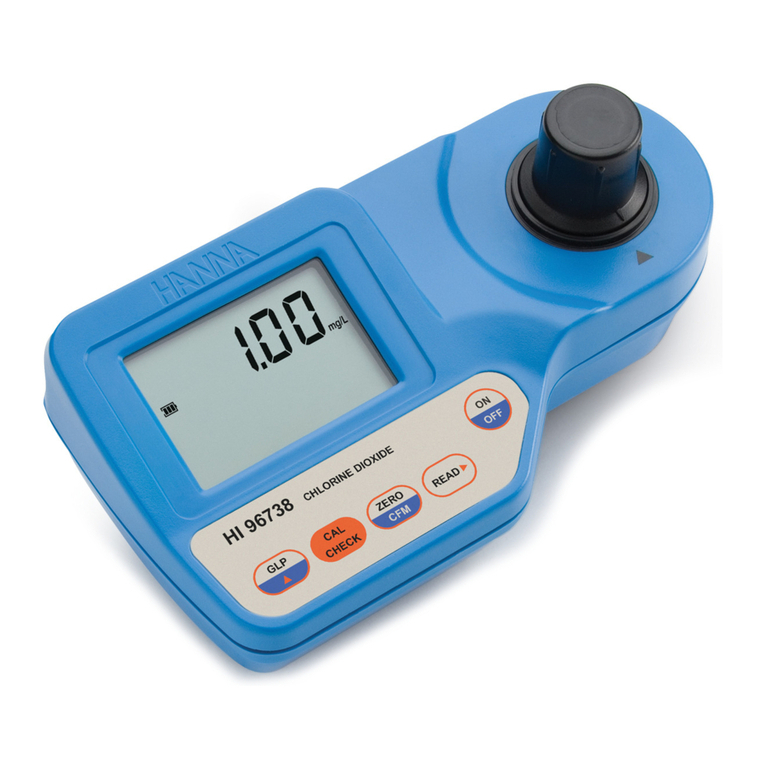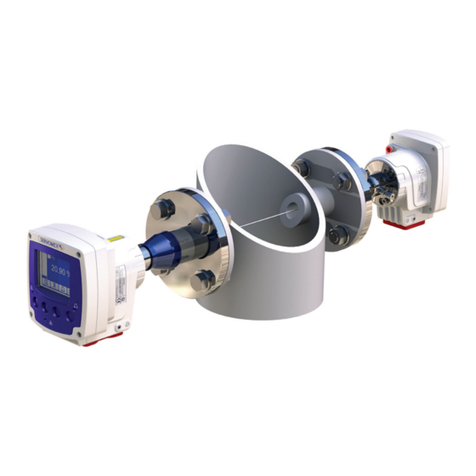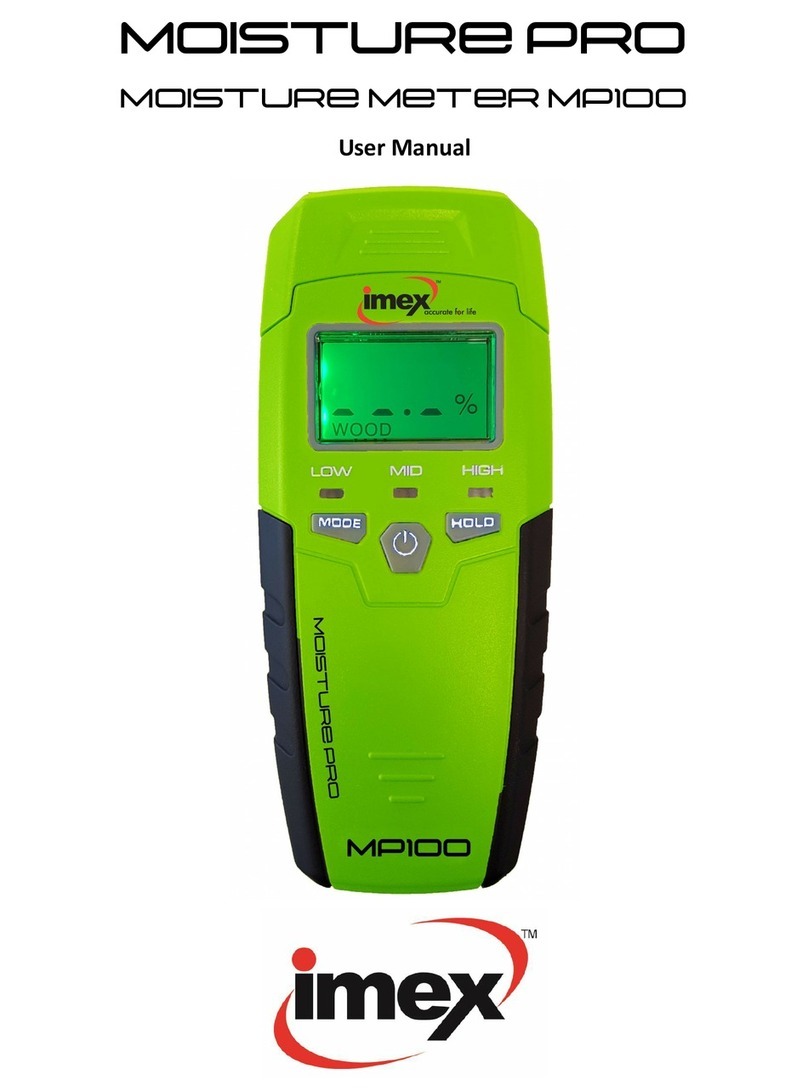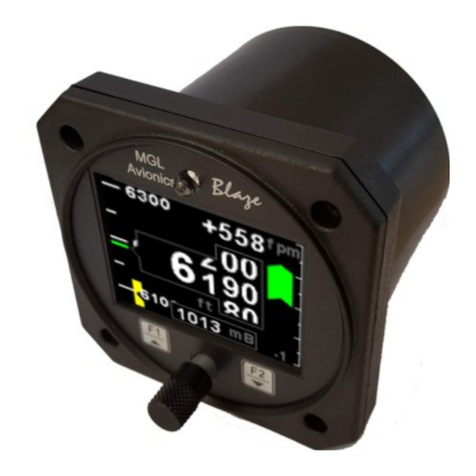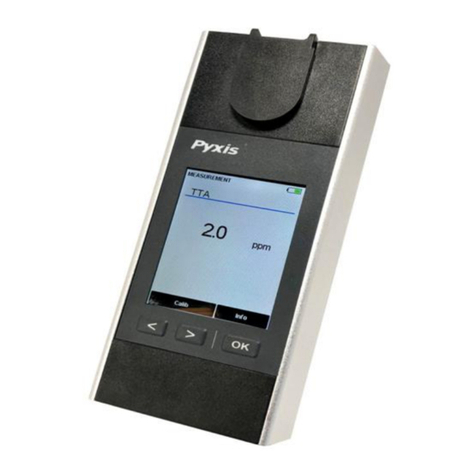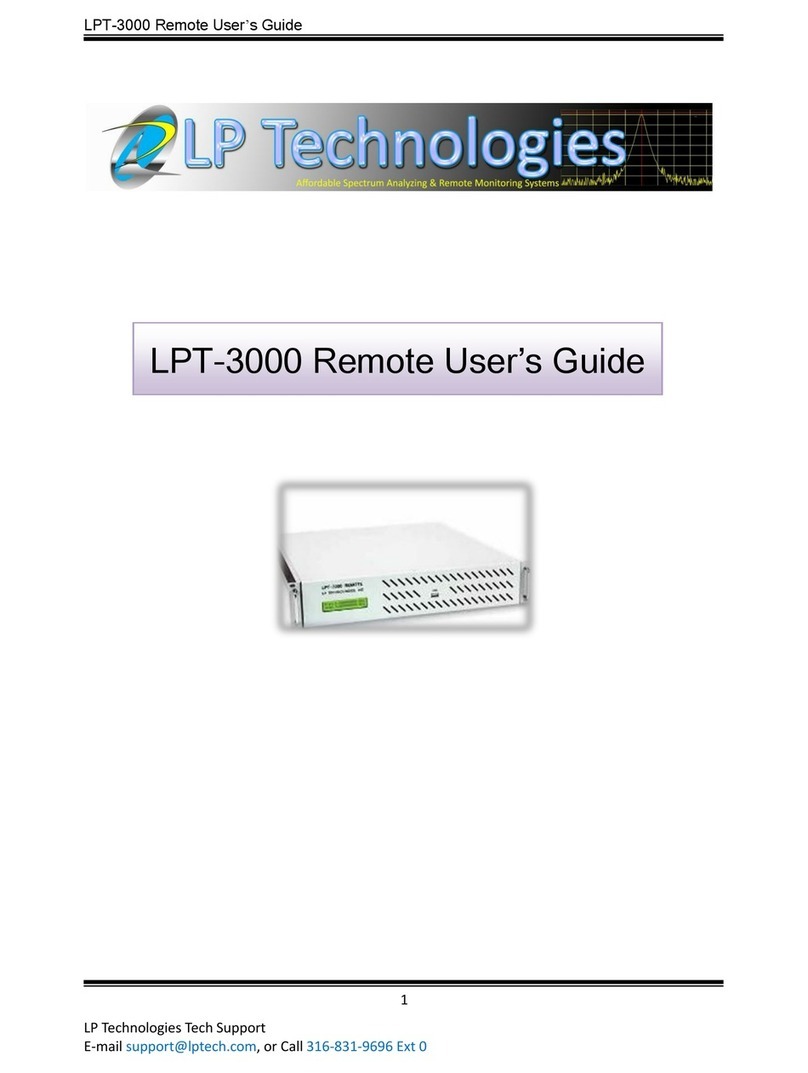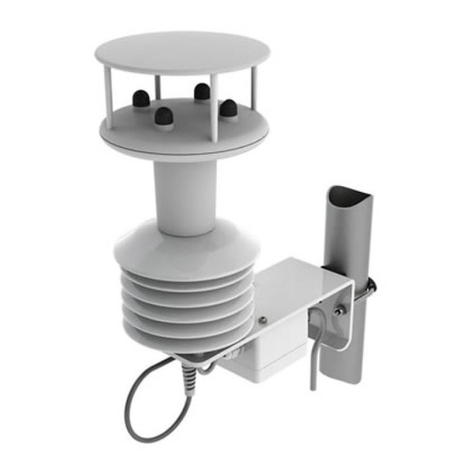Spectra Precision HD150 User manual

29
0635-3120
28
0635-1490
0600-1320
17
0600-1310
18
0600-1340
3
0600-1330
30

A B
C
E
D
F

3
16
12
5
78
4
9
11
12
14
13
15
6
4
10
17
18
19
19
abc d e
fgh
i
k
l
m

21
20
4
24
26
27
25
22
23

American English–1
1 609 929 E86 • (02.12) T
* The better the laser light is scattered (not reflected) back from the sur-
face of the target object and the brighter the laser point is in relation to the
brightness of the surroundings (interiors, twilight), the longer the range will
be.
Under unfavorable conditions (e.g., measurement outdoors with strong
sunlight), it can be necessary to use a target panel.
** +0.1 mm/m (+1/32 in per 26 ft) for unfavorable conditions such as, for
example, strong sunlight and distances over 30 m (100 ft)
The serial number
21
for positive identification of your unit is located on
the nameplate on the underside of the case.
Product Specifications
Digital Laser Distance Measuring Instrument
Order number HD 150
Measuring range (natural surfaces) 0.3 ... 150 m (1 ... 500 ft)*
Measuring accuracy
Typical (0.3 ... 30 m/1...100 ft)
Maximum
±2 mm (±3/32 in)
±3 mm (±1/8 in)**
Measuring time
Typical
Maximum
<0.5 s
4 s
Smallest display unit 1 mm; 1/16 in; 0.005 ft
Operating temperature –10 °C ... +50 °C
(+14 °F ... +122 °F)
Storage temperature –20 °C ... +70 °C
(–4 °F ... +158 °F)
Laser type 635 nm, <1 mW
Laser class 2
Diameter of the laser beam
(at 25 °C/77 °F) approx.
at a distance of 10 m (33 ft)
at a distance of 50 m (164 ft)
at a distance of 100 m (328 ft)
at a distance of 150 m (492 ft)
6 mm (1/4 in)
30 mm (1.2 in)
60 mm (2.4 in)
90 mm (3.5 in)
Batteries
Rechargeable batteries
4 x 1.5 V LR6 (AA)
4 x 1.2 V KR6 (AA)
Battery service life approx. 30000 single measurements
Automatic switch-off
Laser
Instrument (without measurement)
20 s
5 min
Weight (with batteries) approx. 430 g (15.2 oz)
Protection class IP 54 (dust and splash water
protection)

American English–2
1 609 929 E86 • (02.12) T
The unit is intended for measuring distances, lengths, heights, spacings
and to calculate areas and volumes. The unit is suitable for measuring in
interior and exterior construction.
Please open the fold-out page with the illustration of the unit and leave it
open while you read these operating instructions.
1
Continuous measurement button/
minimum-maximum measurement
2
Length measurement button
3
Bubble level*
4
Aligning aid
5
Area measurement button
6 “on/off”
button
7
Measurement button
(Two-step button for sighting and measuring)
8
Display
9
Display lighting button
Symbols
Symbol Name Meaning
mm Millimeter Length
m Meter Length
m
2
Square meter Area
m
3
Cubic meter Volume
in Inch Length
ft Foot Length
sq.ft Square feet Area
cu.ft Cubic feet Volume
s Seconds Time
min Minutes Time
°F Degrees Fahrenheit Temperature
°C Degrees Celsius Temperature
nm Nanometer Wave length
mW Milliwatt Power
V Volts Voltage
g Gram Mass
oz Ounce Mass
° Degree Angle
EN European standard
IP Protection class
Intended Use
Product Elements

American English–3
1 609 929 E86 • (02.12) T
10
Button for changing the
“m/ft”
measuring unit and the continuous
pointer mode
11
Volume measurement button
12
Clear button
13
Indirect length measurement button
14
Button for reading memory
15
Memory subtraction button
16
Memory addition button
17
Compact end piece*
18
Universal end piece*
19
End piece latching
20
1/4" threads
21
Serial number
22
Receiving lens
23
Laser beam exit
24
Grip
25
Flap
26
Flap unlocking button
27
Positioning extension
28
Laser viewing glasses**
29
Target panel**
30
Protective bag*
* Accessory parts (included)
** Optional accessories (not included)
Display Elements
a
Laser switched on
b
Measurement functions
Continuous/minimum-maximum measuring
Length measurement
Area measurement
Volume measurement
Indirect length measurement
c
Minimum/maximum value
d
Individual measured values (except for length measuring function)
e
Units of measure: ft/in/sq.ft/cu.ft, m/m
2
/m
3
f
Measured value/results
g
Display of previous measurement results
h
Error indication
i
Store/addition/subtraction of measured values
k
Temperature indicator
l
Battery indicator
m
Measuring from the back end

American English–4
1 609 929 E86 • (02.12) T
Working safely with this unit is possible only when
the operating and safety information are read com-
pletely and the instructions contained therein are
strictly followed.
Laser radiation of laser class 2
630–675 nm, <1 mW, according to EN 60825-1:2001
The instrument complies with 21CFR, Parts 1040.10 and
1040.11.
Do not look into the laser beam.
Do not point the laser beam at persons or animals.
Because of the narrow concentration of the laser beam,
care will be needed when tracking the beam for long dis-
tances.
■
The laser viewing glasses (accessory) are not protective glasses
against laser radiation. Do not use them as protective glasses against
strong sun light or in traffic.
■
Children may use the unit only under the supervision of adults.
■
Do not remove the warning sign from the unit.
■Have repairs carried out only by a Trimble Service Center. Never open
the unit yourself.
■Trimble is able to ensure perfect functioning of the unit only if the orig-
inal accessories intended for it are used.
■Protect the unit from moisture and direct sunrays.
■Dirt in the end piece can lead to corrosion or breaks in contact. Always
keep the end piece clean.
■If the unit is not used for a long period, the batteries must be removed
(danger of corrosion).
■Transport and store the unit in the protective bag 30.
Use alkali-manganese or rechargeable batteries exclusively.
Rechargeable 1.2 V batteries reduce the number of possible measure-
ments.
Press the latches 19 on both sides of the end piece and remove the end
piece 17 or 18.
Insert the batteries provided. When inserting the batteries, pay attention
to the correct polarization. Reinsert the end piece 17 or 18.
When the battery symbol appears, at least 100 measurements are still
possible.
When the battery symbol blinks, the batteries must be replaced. Mea-
surements are no longer possible.
Always replace the complete set of battery.
For Your Safety
Protection of the Unit
Inserting/Replacing the Batteries

American English–5
1 609 929 E86 • (02.12) T
Switching On/Off
Switching on:
Press the “on/off” button 6or the measurement button 7completely
down.
Switching off:
Press the “on/off” button 6.
After approx. 5 min without performing a measurement, the unit switches
off automatically to save the batteries.
With the automatic switch-off, the current display and the settings of the
unit are also stored in addition to the already stored measured values.
When switched on again, the unit is in the same function and shows the
same display as before the automatic switch-off.
Changing the Measuring Unit
After switching on the measuring instrument, the measured values are
shown in the unit that was selected the last time the measuring instrument
was used.
With repeated pressing of the “m/ft” button
10, switching between the units of measure
shown here can be made at any time, also for
already calculated values.
Exception: If the continuous laser beam is
switched on (see Continuous Pointer Mode),
the measuring unit cannot be changed.
For areas or volume entries, only units of m or ft are possible.
Measuring Procedure
The instrument has several measuring functions that can be selected by
pressing the respective function button (see Measurement Functions
Section). After switching on, the instrument is in the “Length Measuring”
function.
To change the measuring function, press the button for the desired func-
tion. After selecting the measuring function, all further steps take place by
pressing the measure button 7.
Place the rear end of the unit (end piece) at the desired measuring position
(e.g. on a wall). The rear end of the unit is the reference point for the mea-
surement.
– To switch on the laser beam, lightly press the measurement button 7
in the middle or press at the side.
– Aim at the target.
■Do not point the laser beam at persons or animals.
– To measure, press the measure button 7completely down.
The measured value appears after 0.5 to 4 s. The end of the measure-
ment is indicated by an acoustical signal. The duration of the measure-
ment is dependent on the distance, light conditions and reflection charac-
teristics of the measured surface. After completion of the measuring
procedure, the laser switches off automatically.
Putting into Operation

American English–6
1 609 929 E86 • (02.12) T
Continuous Pointer Mode
As required, the unit can be switched to continuous laser beam (continuous
pointer mode). For this purpose, press the measurement button 7lightly in
the middle or the side to switch on the laser beam. Then press the contin-
uous pointer mode button 10. In this mode, the laser beam also remains
switched on between measurements. For measuring, only a single press-
ing down completely of the measurement button 7is necessary.
■Do not look into the laser beam.
■Do not point the laser beam at persons or animals.
When the continuous laser beam is switched on, the measuring unit of the
displayed measured values cannot be changed.
To switch off the continuous laser beam, press the continuous pointer
mode button 10 or switch off the unit. After renewed switching on, the
unit is again in the normal mode (the laser beam is switched on only when
the measurement button 7is pressed).
The instrument measures from the back end of the case.
– The receiving lens and the outlet of the laser beam should not be cov-
ered during a measurement.
– Do not move the instrument during a measurement (Exception: Con-
tinuous measurement function including minimum/maximum mea-
surement). If possible, rest the instrument on or against the measuring
point.
– The measurement takes place at the middle point of the light spot,
also for obliquely illuminated target surfaces.
– The measuring range depends on the light conditions and the reflec-
tion characteristics of the measured surface. For outdoors work and
with strong sunlight, use the laser viewing glasses 28 or the target
panel 29 (accessories) for better visibility of the laser spot or shade the
target area.
– When measuring to transparent surfaces (e.g. glass, water) or reflect-
ing surfaces, erroneous measurement can result. Porous or struc-
tured surfaces, air strata with different temperatures or indirectly re-
ceived reflections can also influence the measured value. These
effects are caused by physical properties and can therefore not be ex-
cluded by the measuring instrument.
– In the dark, press the display lighting button 9. The display is then
lit. To switch off the lighting, press the button 9again.
– By means of the upper and side aligning aids 4, aiming over longer
distances is facilitated. For this purpose, sight along the upper or side
aligning aids. The laser beam runs parallel to these lines of sight (see
Fig. ).
– When the unit is switched off, all values stored in memory are re-
tained. However, when the end piece is removed (changing of the
end piece or the batteries), the memory contents are lost.
Working Instructions
A

American English–7
1 609 929 E86 • (02.12) T
Changing the End Piece
The unit is provided with two different end pieces.
The compact end piece 17 reduces the dimensions of the unit. It is suit-
able for measurements for which the rear end of the unit can rest on a flat
surface.
The universal end piece 18 is suitable for measurements from corners,
e.g. to determine the diagonals of a room.
– With the aid of the positioning extension 27 on the universal end piece
18, the unit can be placed on an edge (see Fig. ). For this purpose,
pull up the flap 25 with the grips 24 and fold out the positioning ex-
tension 27.
– If the rear end of the unit is to be placed on a flat surface, fold in the
positioning extension 27.
– For measuring from corners, fold in the positioning extension 27,
press the unlocking button 26 and allow the flap 25 to relatch.
To change the end piece, press the latches 19 on both sides and remove
the end piece. Insert the new end piece.
The unit takes automatically into consideration the different lengths of the
end pieces when measuring (measurement in both cases from the rear
end of the unit).
Bubble Level
The bubble level makes possible the easy horizontal alignment of the unit.
The bubble level 3can be attached on the right or left of the display 8on
the housing. Attach the bubble level with the lower end of the holder first.
Measurements with a Tripod
Measurements with a tripod are especially necessary for long distances.
The unit can be screwed onto a camera tripod with the 1/4" threads 20
on the underside of the housing.
☞Also with the use of a tripod, the unit measures from its rear
end and not from the middle of the threads.
By means of transit measurement, distances of up to 300 m/984 ft (two
times 150 m/492 ft) can also be measured.
Length Measurements
Press the length measuring button 2to switch to the mode for length
measurements. The symbol for length measurements appears in the up-
per part of the display.
To measure, press the measure button 7
completely down.
The measured value is shown at the bottom of
the display.
Measurement Functions
B

American English–8
1 609 929 E86 • (02.12) T
Area Measurement
Press the area measuring button 5to switch to the mode for area
measuring. The symbol for area measurements appears in the upper part
of the display.
Then measure the length and width one after
the other as for a length measurement. After
completing the second measurement, the re-
sult is automatically calculated and displayed.
The individual measured values are shown in
the upper right of the display, the results at the
bottom.
Volume Measurement
Press the volume measuring button 11 to switch to the mode for vol-
ume measurement. The symbol for volume measurement appears in the
upper part of the display.
Then measure the length, width and height
one after the other as for a length measure-
ment. After completion of the third measure-
ment, the result is automatically calculated
and displayed.
The individual measured values are shown in
the upper right of the display, the results at the
bottom.
Note: Values of more than 9999999 cu.ft
cannot be displayed. For larger values, switch
to the “m3” unit of measure by pressing the
“m/ft” button 10.
Continuous Measurement (see Fig. )
The continuous measurement serves for the transfer of dimensions, for
example, from construction plans. With continuous measuring, the instru-
ment can be moved relative to the target with the measured value being
updated approximately every 0.5 s. For example, the user can move
back from a wall until he reaches the desired distance with the actual dis-
tance always being readable.
To set the unit to the continuous measurement mode, press the
button 1. The symbol appears in the display.
To initiate the measurement process, press
the measurement button 7completely down.
Move the measuring instrument until the de-
sired distance value is shown at the bottom of
the display.
By pressing the measure button 7, the contin-
uous measuring is interrupted. The current
measured value is shown in the display. Again
pressing the measure button 7starts the con-
tinuous measuring anew.
The continuous measuring switches off automatically after 10 min. The
last measured value remains in the display.
For earlier ending of the continuous measuring, change the measuring
function with one of the function buttons.
C

American English–9
1 609 929 E86 • (02.12) T
Minimum-Maximum Measurement (see Fig. + )
The minimum/maximum measurement serves to determine the minimum
or maximum distance from a fixed reference point. It is an aid, for exam-
ple, for the determination of diagonals (maximum value) as well as verti-
cals and horizontals (minimum value).
To switch to the minimum/maximum measuring mode, press the
button 1. The symbol appears in the display.
To initiate the measurement process, press
the measurement button 7completely down.
Move the laser point back and forth over the
desired target point (e.g., the corner of a
room) so that the rear end of the unit as the
reference point for the measurement remains
at the same position.
At the upper right in the display, the minimum
and maximum are shown.
By pressing the measurement button 7, the minimum/maximum mea-
surement is interrupted. The current measured values are shown in the
display. Renewed pressing of the measurement button 7starts the min-
imum/maximum measurement anew.
Indirect Length Measurement (see Fig. )
The indirect length measuring function serves for measuring distances
that cannot be measured directly because an obstacle would obstruct the
laser beam or no target surface is available as a reflector. The best pos-
sible results are achieved only when the laser beam and the measured
distance form an exact right angle (Pythagorean theorem).
In the illustrated example, the length “C” is to be determined. For this pur-
pose, “A” and “B” must be measured.
Press the indirect length measurement button 13 to switch to the
mode for indirect length measuring. The symbol for indirect measuring
appears in the display.
As for a length measurement, measure the
distance “A”. Take care that a right angle ex-
ists between the laser beam and the distance
“C”. Then measure distance “B”.
During the measurements, the rear end of the
unit as the reference point must remain at the
same position.
After completing the second measurement, the length “C” is automatical-
ly calculated and indicated at the bottom of the display. The individual val-
ues are shown at the upper right.
Storing/Adding of Measured Values
By pressing the button 16, the value at
the bottom of the display – either a length,
area or volume value depending on the cur-
rent measuring function – is stored in memory.
In the display, “M+” appears briefly and then
“M”.
If a value is already present in the memory, the
new value is added to the memory contents,
however, only when the units of the measure-
ments are in agreement.
For example, if an area value is stored in the memory and the current mea-
surement is a volume value, the addition cannot be performed. In the dis-
play, the “ERROR” message blinks briefly.
D E
F

American English–10
1 609 929 E86 • (02.12) T
Subtraction from Measured Values
By pressing the button 15, the value at the bottom of the display is
deducted from the value stored. In the display, “M–” appears briefly and
then “M”.
If a value is already present in the memory, the new value is subtracted
from the memory contents, however, only when the units of measurement
are in agreement (see Storing/Adding of Measured Values).
Display of the Stored Value/
Display of the Last 20 Measurement Results
By pressing the button for memory recall
14, the value stored in the memory is
displayed. In the display, the memory symbol
“M=” appears.
When the memory content “M=” is shown in
the display, it can be doubled by pressing the
button 16 or set to zero by pressing the
button 15.
In addition, the unit stores automatically the
results of the last 20 measurements. By re-
peated pressing of the button for memory re-
call 14, the measurement results are
displayed in reverse order (the last measured
value first). In the display, the symbol ap-
pears. The counter at the right next to the
symbol shows the numbering of the displayed
values.
The measured values displayed can still be entered into memory by press-
ing the button 16 or the button 15.
Clearing the Measured Value/Memory
By pressing the clear button 12, correction of the last determined
individual measured values in the area, volume, continuous/mini-
mum/maximum and indirect length measuring functions is possible.
By repeated pressing of the clear button
, several individual measured values are
cleared one after the other in the reverse order
of the measurement.
By pressing the clear button in the min-
imum/maximum measuring function, the min-
imum and maximum measured values are
cleared simultaneously.
To clear the memory contents, first press the button 14 for memory
recall until “M=” appears in the display. Then press the clear but-
ton 12; the “M” no longer appears in the display.
The list of the last 20 measurement results can be cleared when first the
button 14 for memory recall is pressed until the symbol and the
counter of the measurements appear. Then press the clear button
12; in the display, no longer appears.

American English–11
1 609 929 E86 • (02.12) T
The instrument monitors the correct functioning for ev-
ery measurement. If a defect is detected, only the sym-
bol blinks in the display (measurement from the
back end). Take the unit to your dealer for sending to
the Trimble Service Center.
The accuracy of the instrument can be checked as follows:
– Select a distance that never changes that is approx. 1–10 m (3.3–
33 ft) long (e.g. room width, door opening) whose length is known ex-
actly.
– Measure this distance ten times one after the other.
The measurement error can be a maximum of ±3 mm (±1/8 in). Record
the measurements so that the accuracy can be compared at a later time.
Error – Cause and Correction
Cause Correction
The temperature indicator k blinks, measuring is not possible
Measurement outside the allowed
temperature range from –10 °C
(+14 °F) to +50 °C ( +122 °F).
Wait until the allowable temperature
range is reached.
“ERROR” Message and “------- m” in the Display
The angle between the laser beam
and the target is too acute.
Increase the angle between the
laser beam and the target.
The target surface reflects too
strongly (e.g. a mirror) or too weak-
ly (e.g. black material).
Use the target panel (accessory).
Ambient light is too strong
(e.g. sunlight).
Use the target panel (accessory).
The receiving lens 22 or the laser
beam exit 23 are misted over, for
example, as a result of changing
between low and high environmen-
tal temperatures.
Wipe the receiving lens 22 or the
laser beam exit 23 dry with a soft
cloth.
Unreliable Measurement Results
The target surface does not reflect
clearly (e.g. water, glass).
Cover the target surface.
The laser beam exit 23 or the
receiving lens 22 is soiled.
Keep the laser beam exit 23 or the
receiving lens 22 free of dirt.
The corrective measures listed
above do not eliminate the error.
Take the unit to your dealer for
sending to the Trimble Service
Center.
Checking the Measurement Accuracy

American English–12
1 609 929 E86 • (02.12) T
Do not immerse the unit in water.
Wipe off dirt with a damp, soft cloth. Do not use aggressive cleaning
agents or solvents.
Take care of the unit, especially the receiving lens 22, by handling it in the
same manner as for eye glasses or a camera.
If the unit should fail despite the care taken in manufacture and testing,
the repair should be performed by an authorized Trimble Service Center.
In case of repair, send in the unit in the protective bag 30.
Recycle raw materials instead of disposing as waste.
The unit, accessories and packaging should be sorted for environment-
friendly recycling.
These instructions are printed on recycled paper manufactured without
chlorine.
The plastic components are labeled for categorized recycling.
Do not throw used batteries into household waste, fire or water, but rather
– according to the applicable legal regulations – dispose of in an environ-
mentally friendly manner.
Specifications subject to change without notice.
Maintenance
Environmental Protection
Table of contents
Other Spectra Measuring Instrument manuals
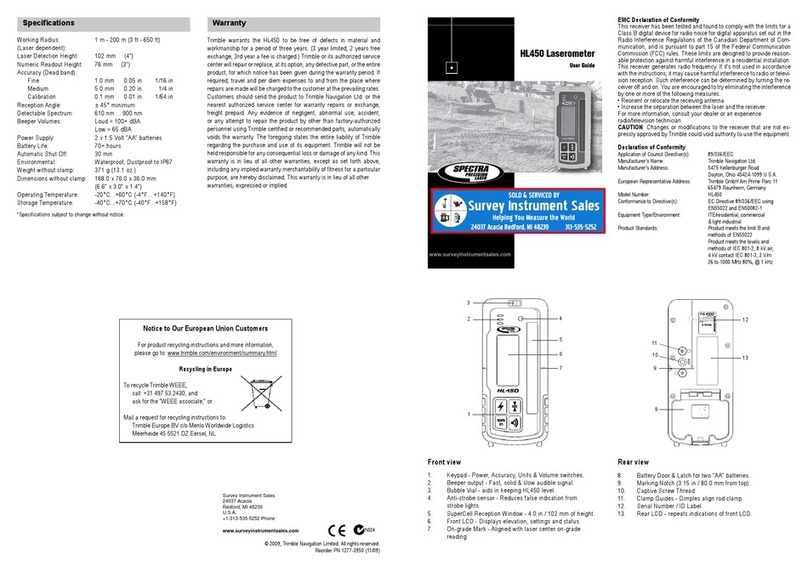
Spectra
Spectra HL450 User manual
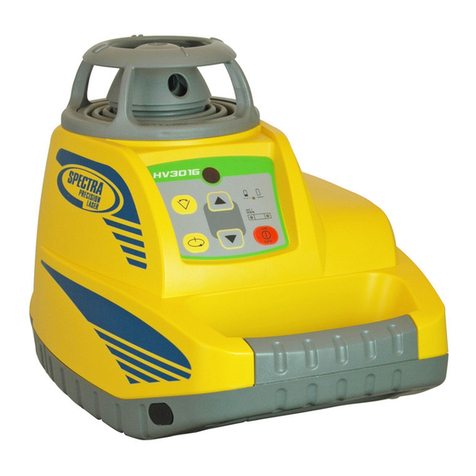
Spectra
Spectra HV301 User manual

Spectra
Spectra V610 User manual
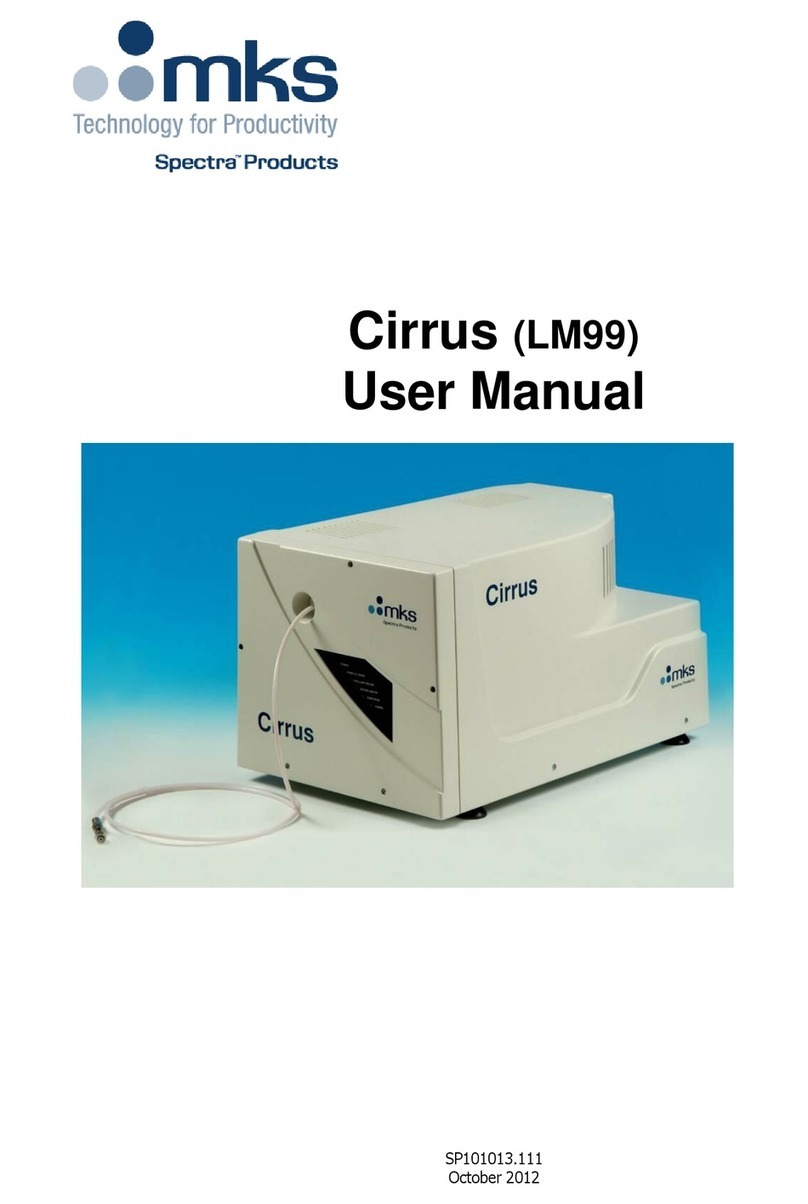
Spectra
Spectra MKS Cirrus LM99 User manual

Spectra
Spectra GL1425C User manual
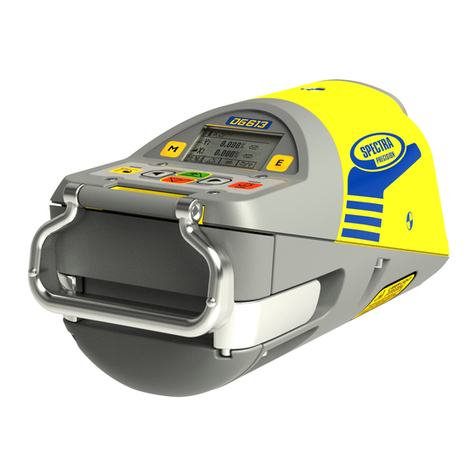
Spectra
Spectra DG613 User manual
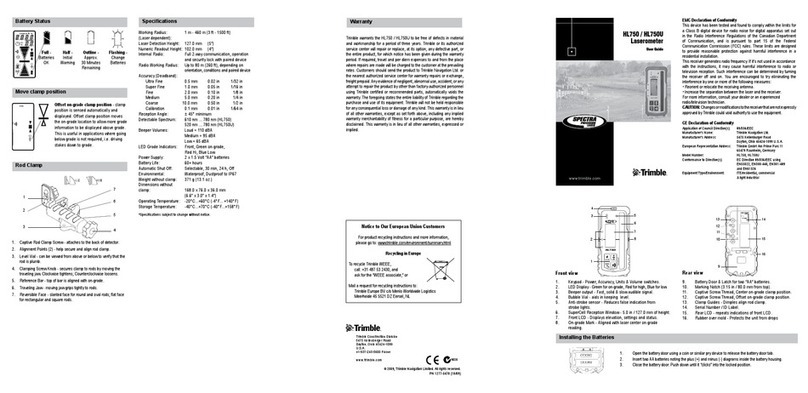
Spectra
Spectra Trimble hl750 User manual
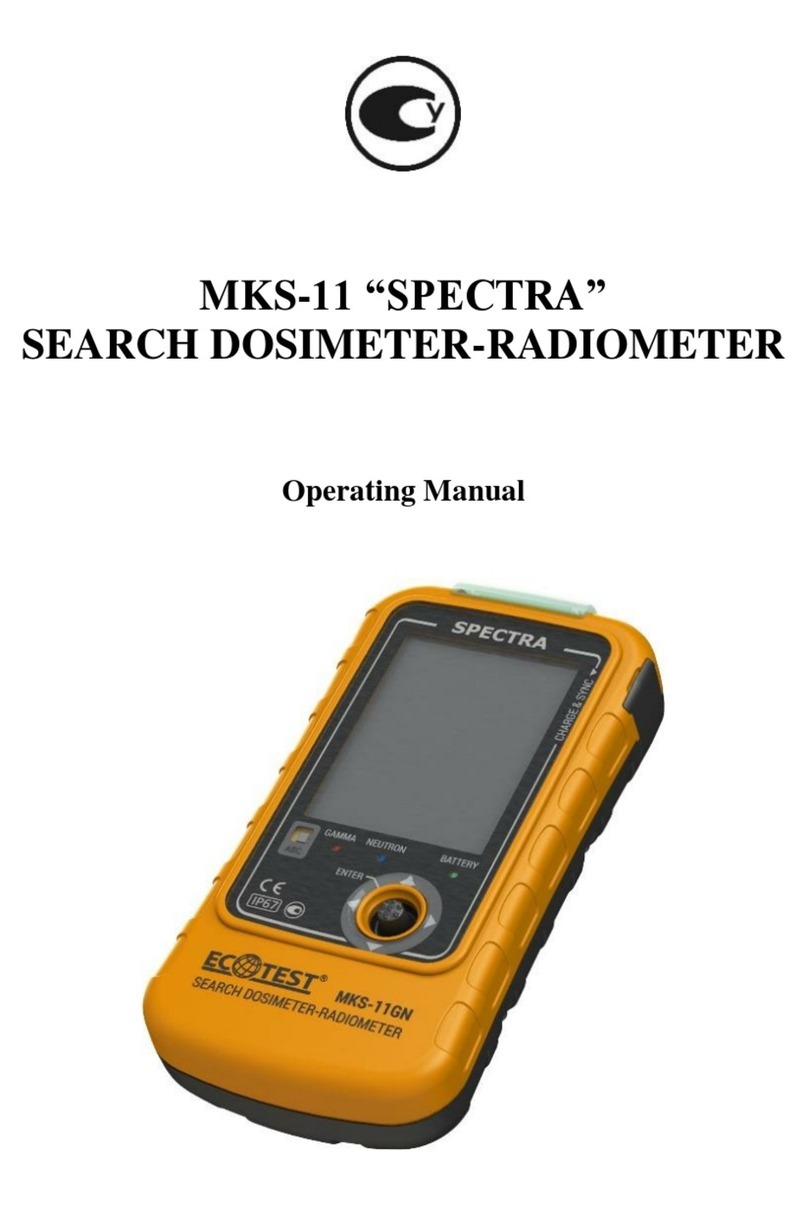
Spectra
Spectra MKS-11 User manual
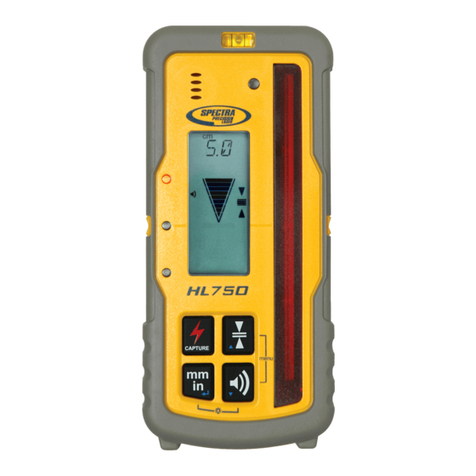
Spectra
Spectra Trimble hl750 User manual
Popular Measuring Instrument manuals by other brands
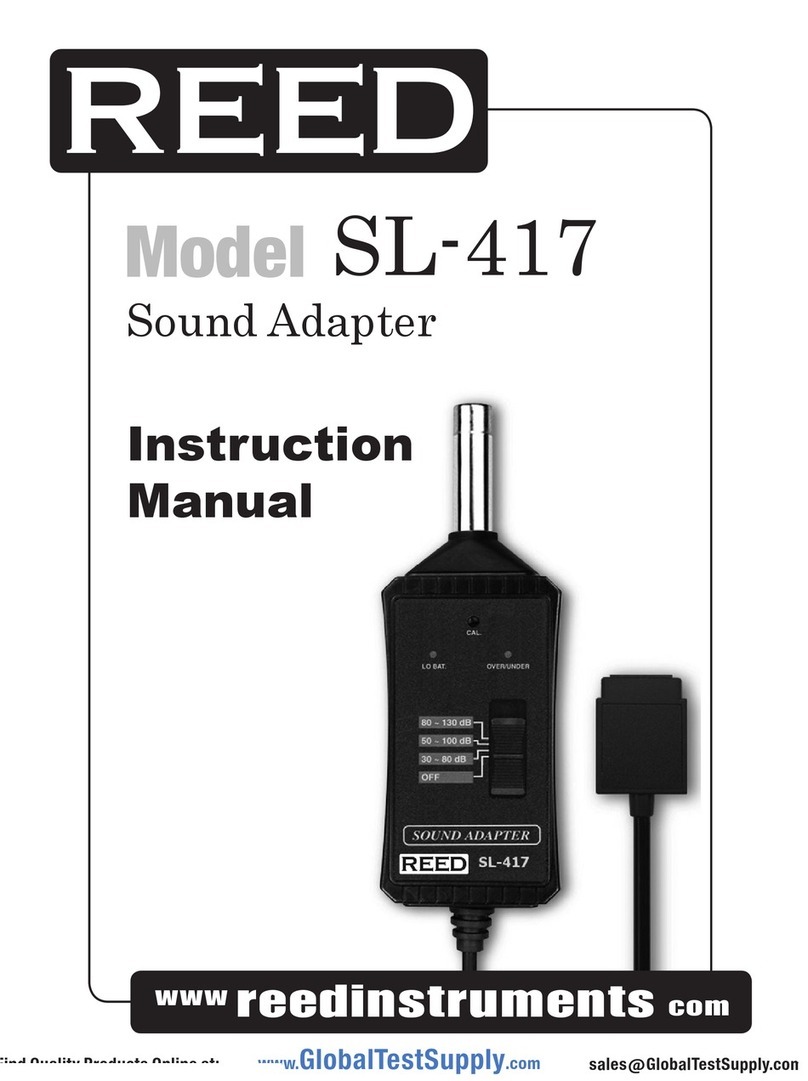
REED
REED SL-417 instruction manual
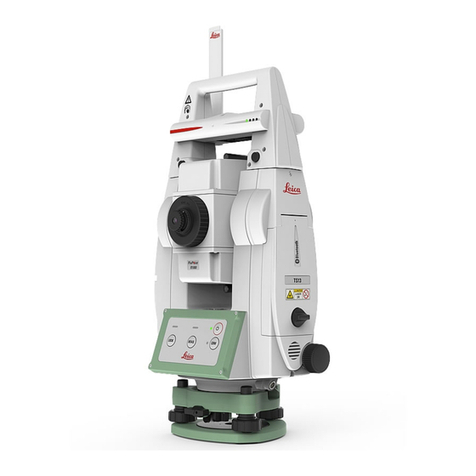
Leica
Leica TS13 user manual
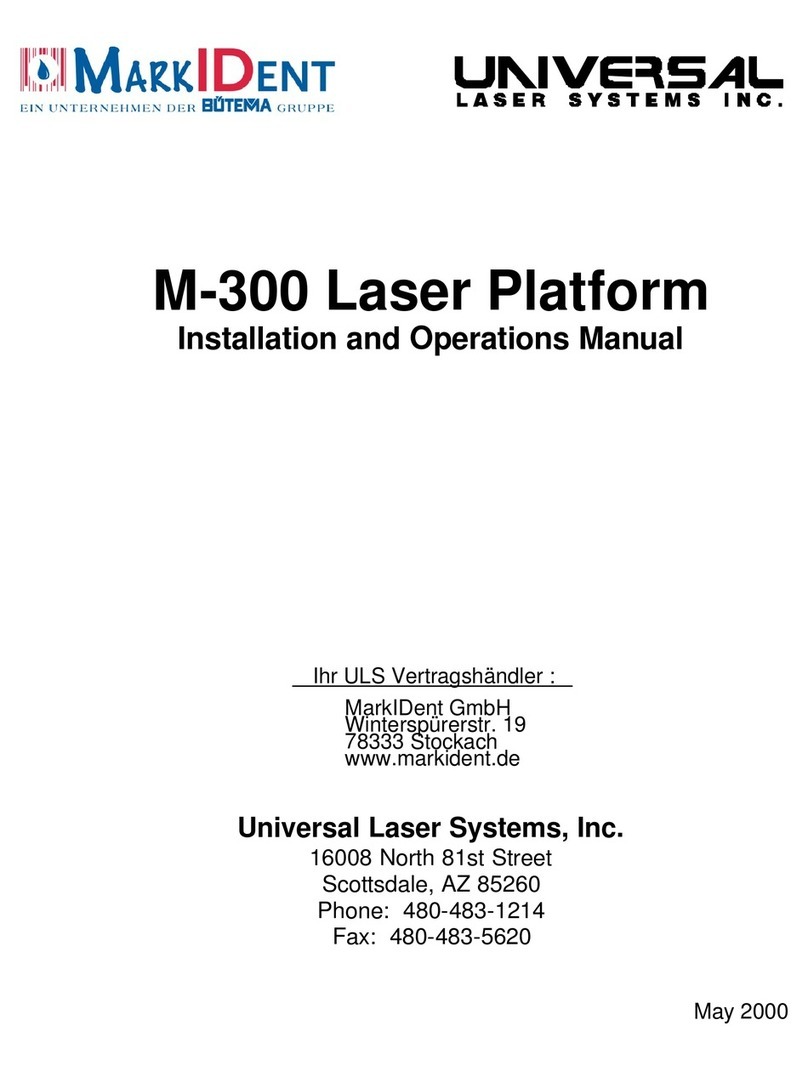
Universal Laser Systems
Universal Laser Systems Laser Platform M-300 Installation and operation manual

Analytical Technology
Analytical Technology Q46H/62-63 manual

Konica Minolta
Konica Minolta MULTI GLOSS 268 instruction manual
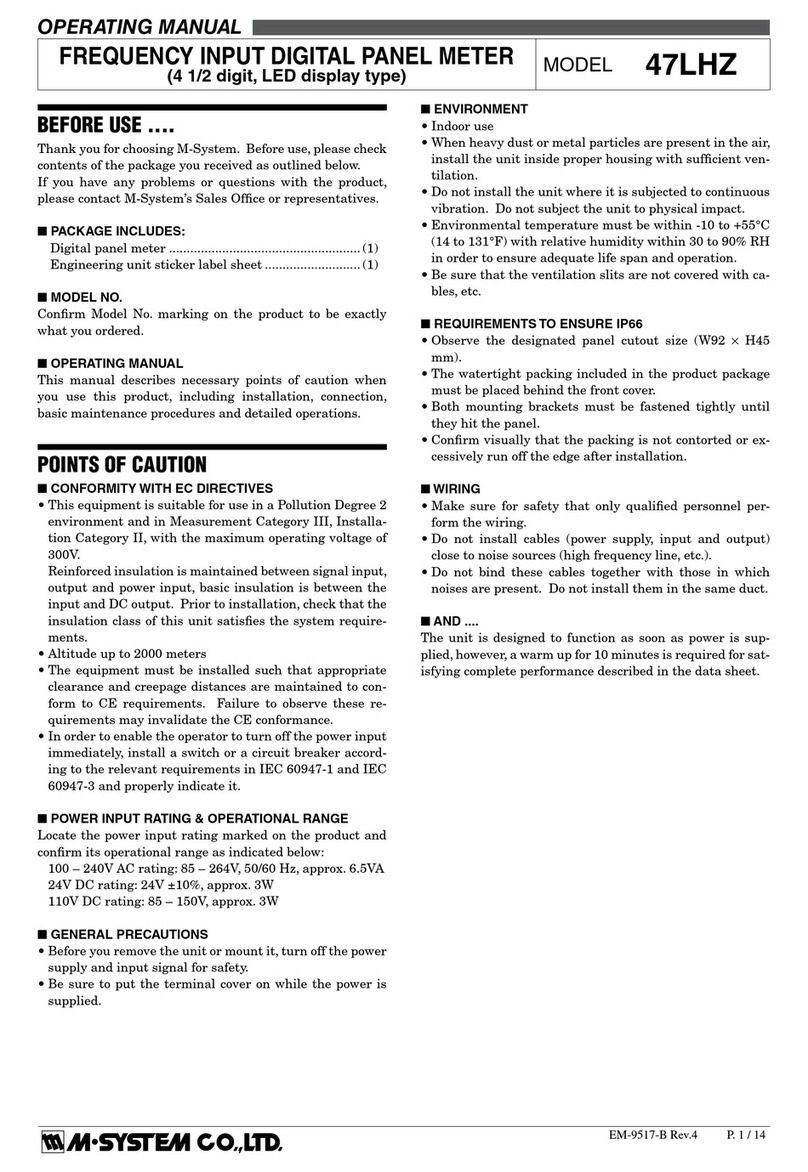
M-system
M-system 47LHZ operating manual
